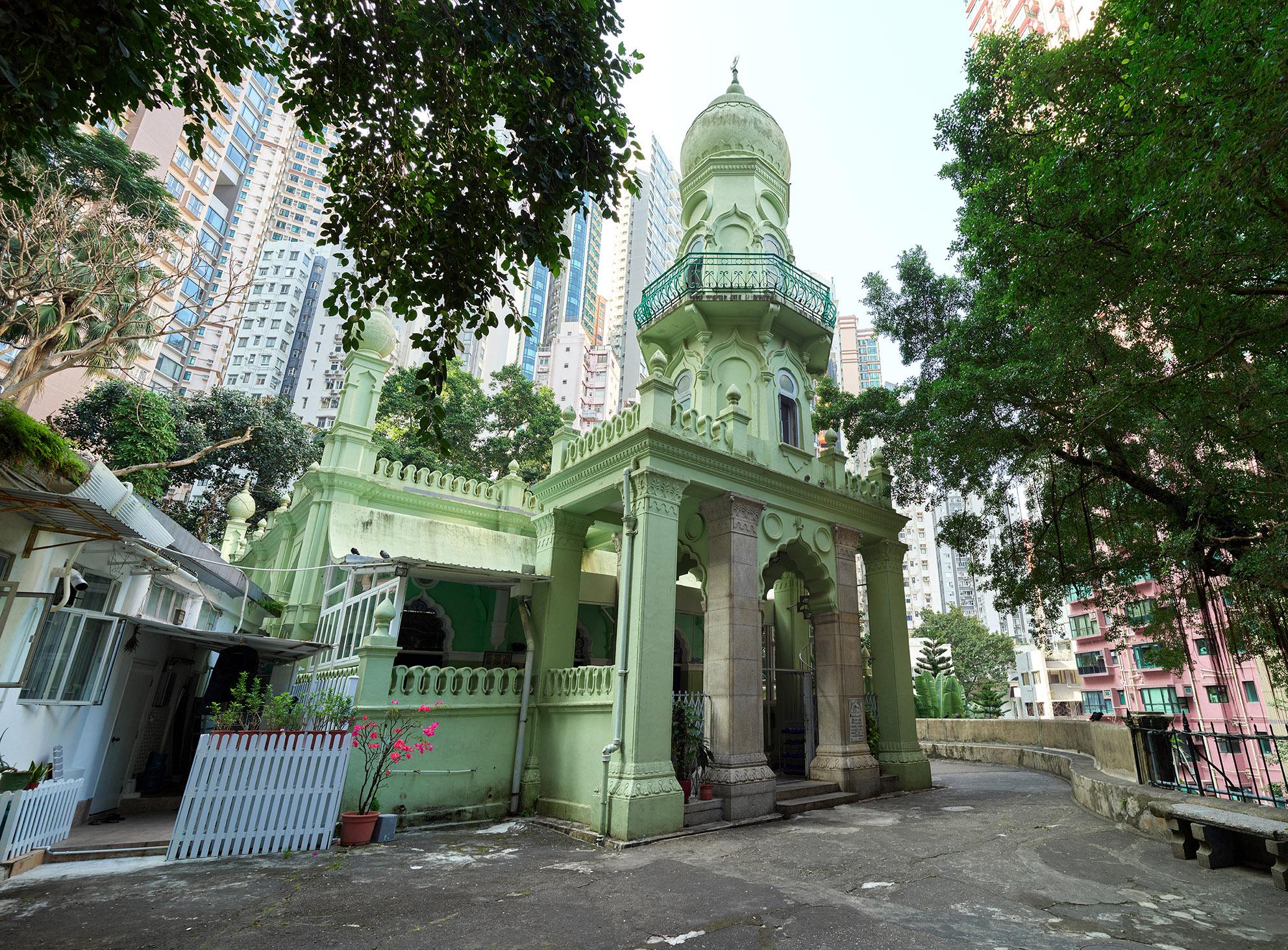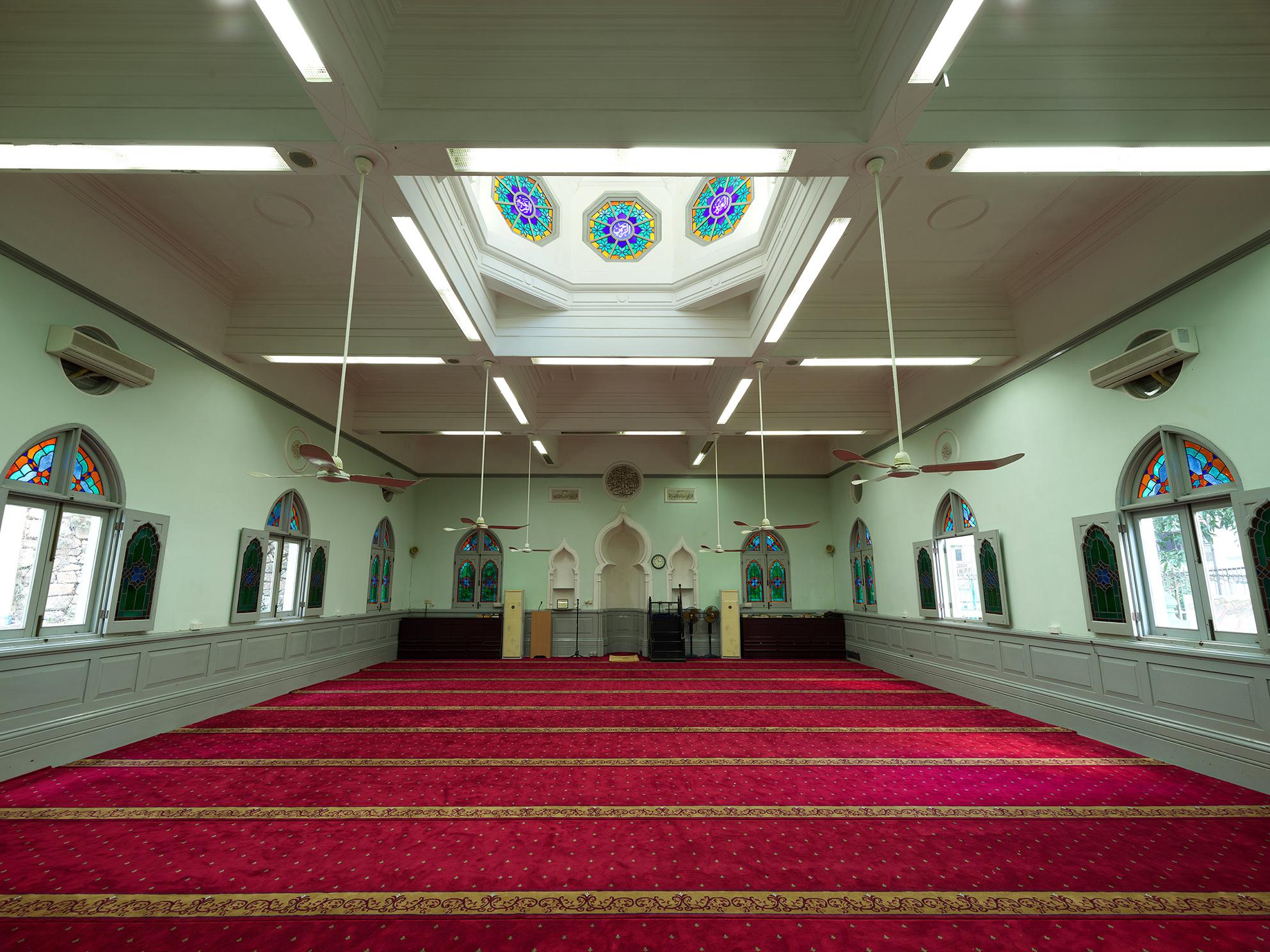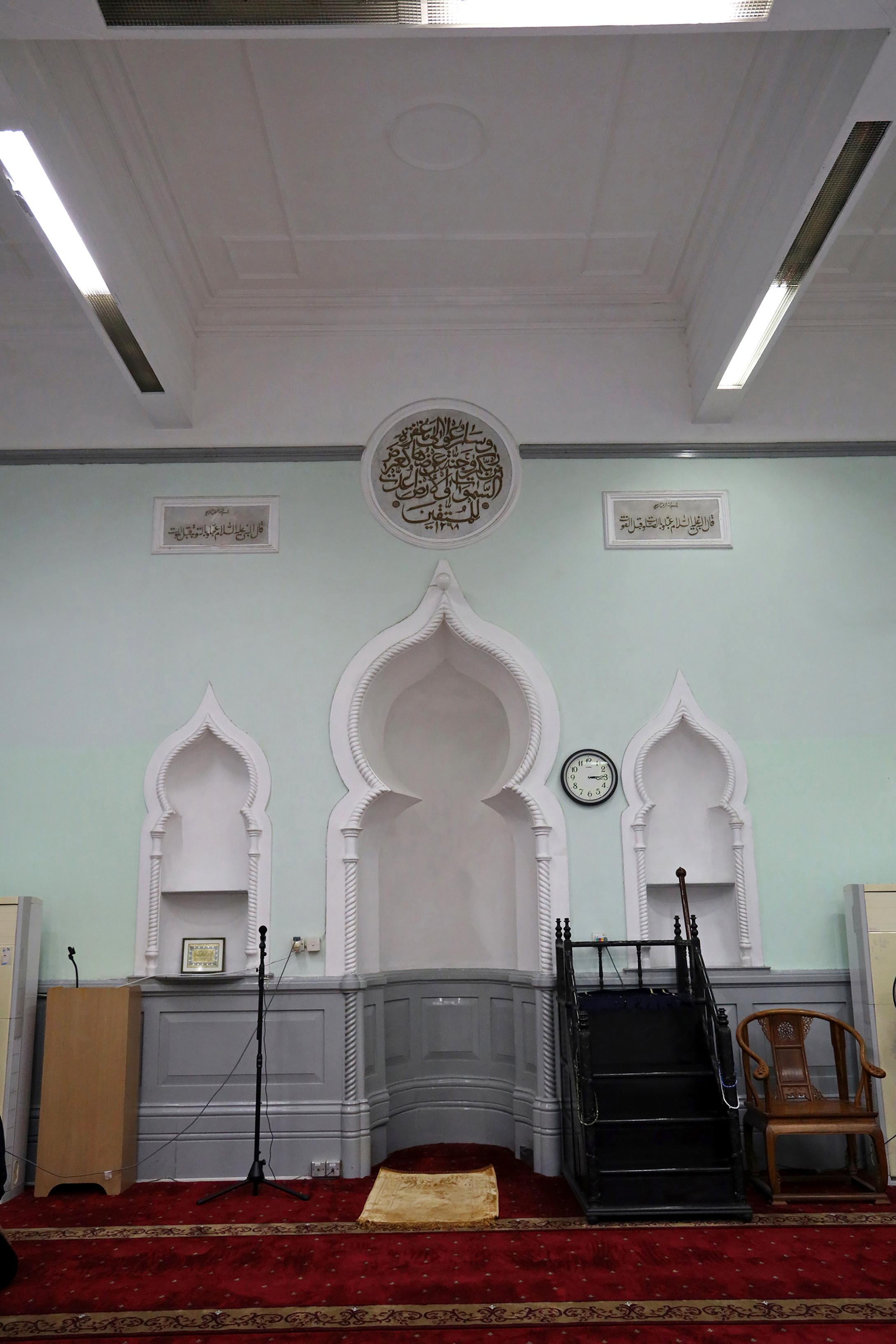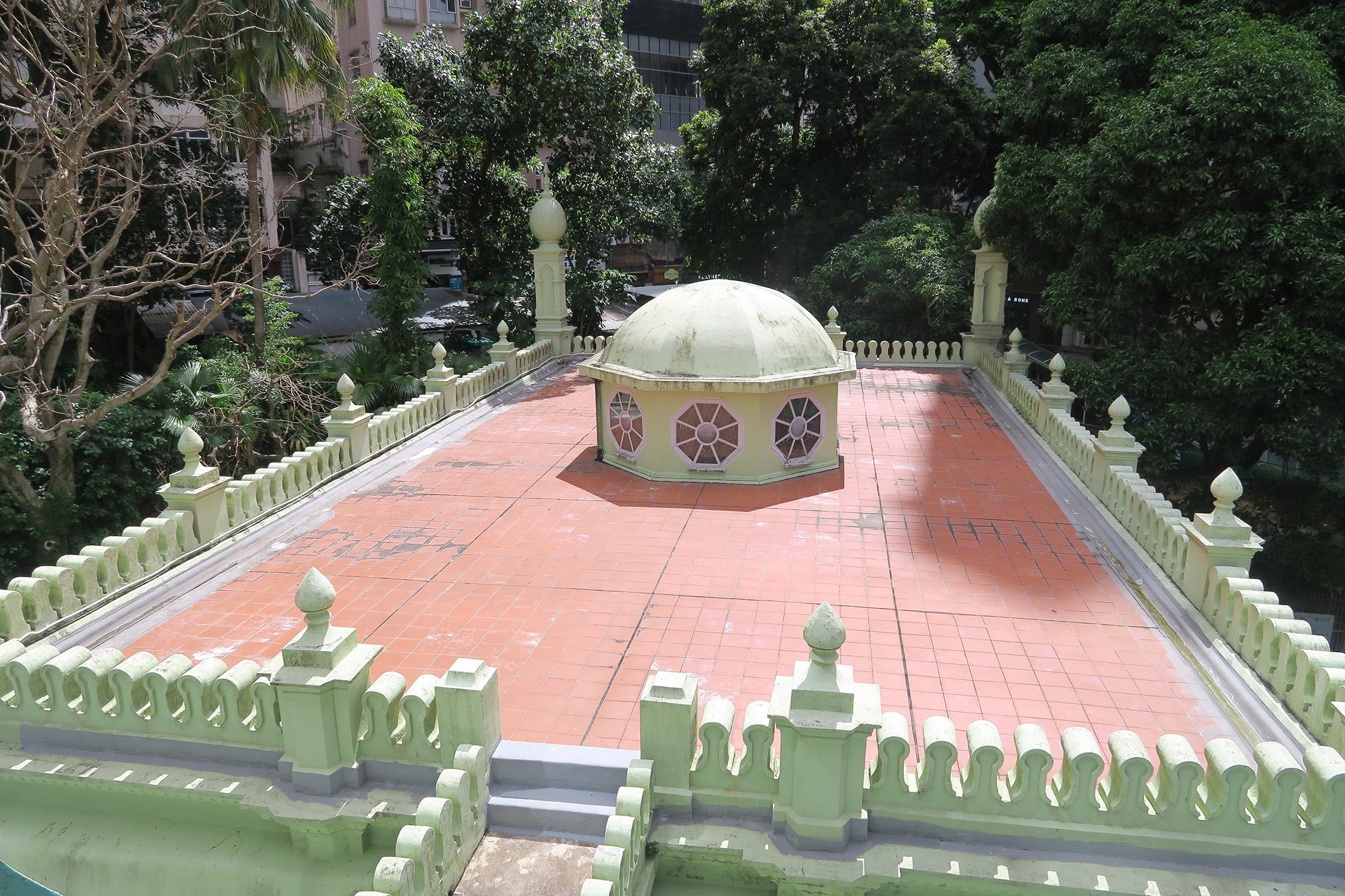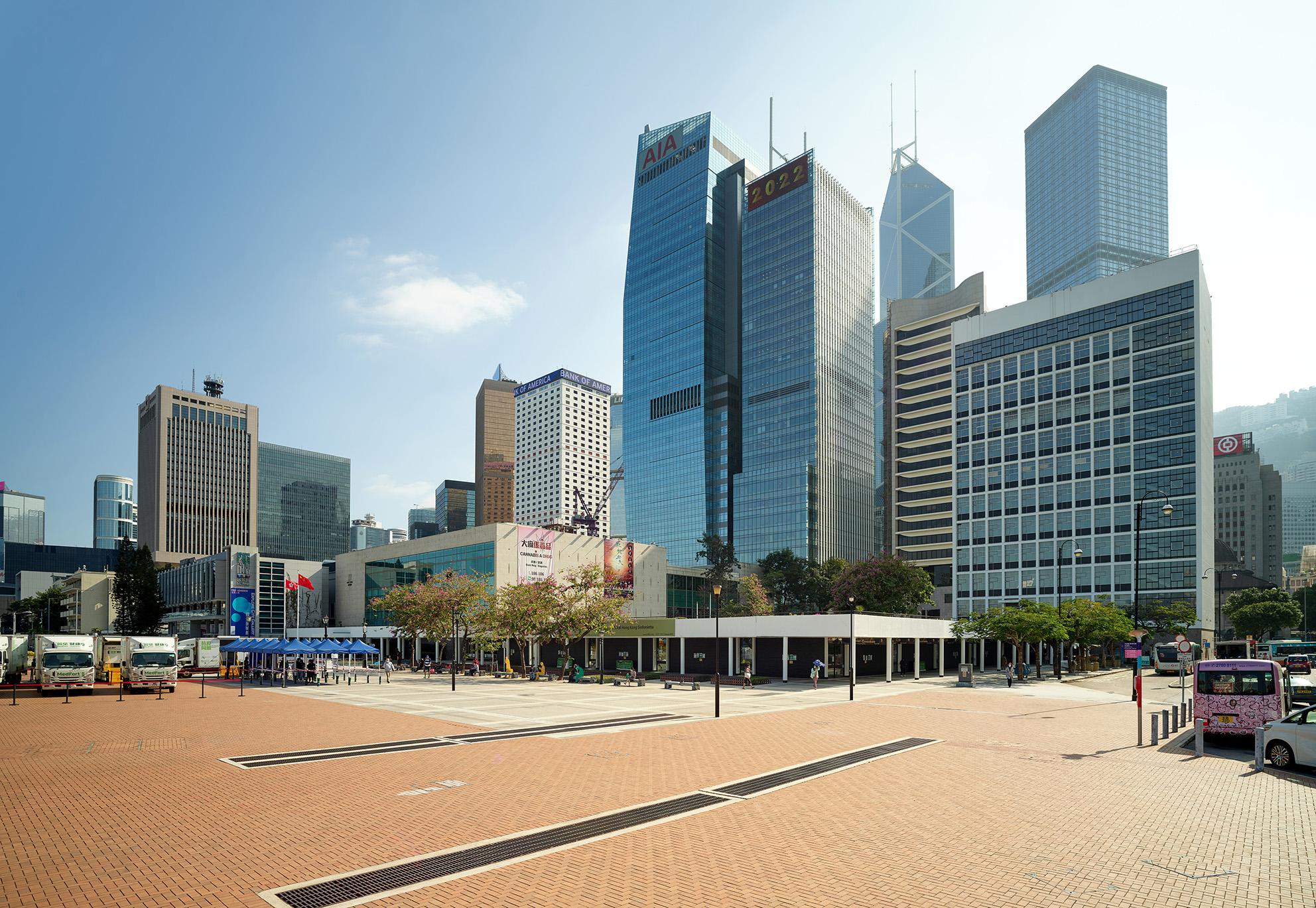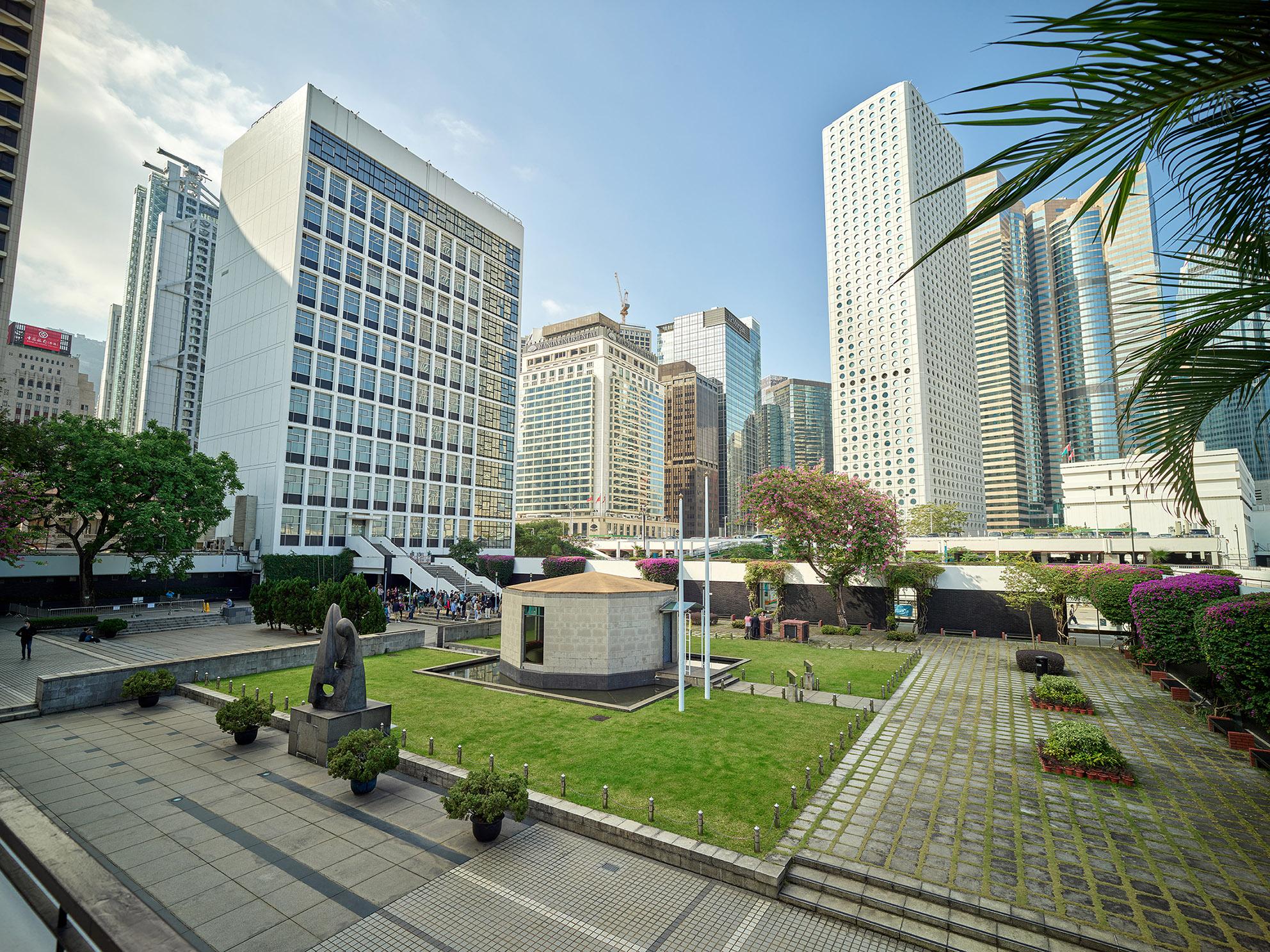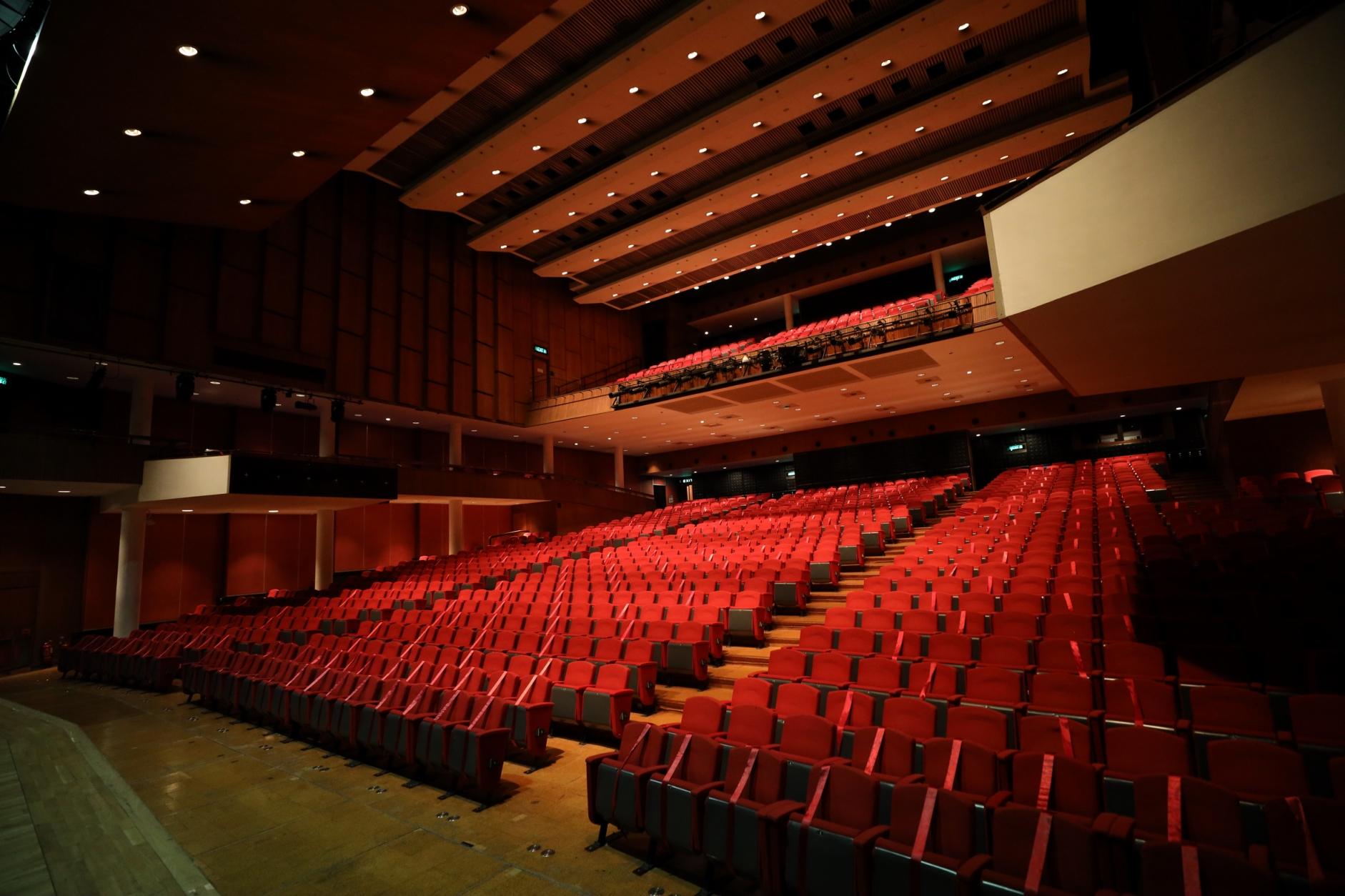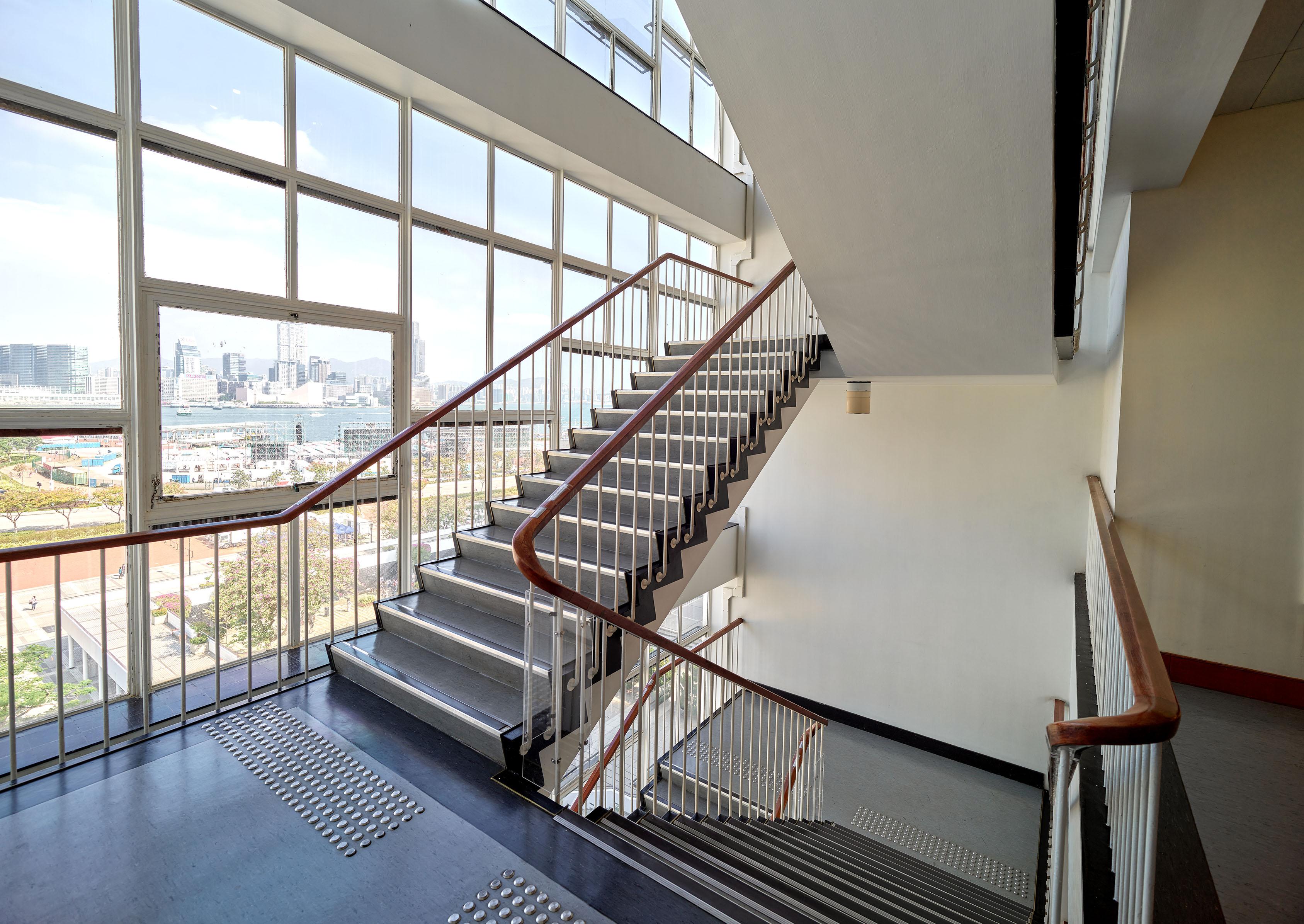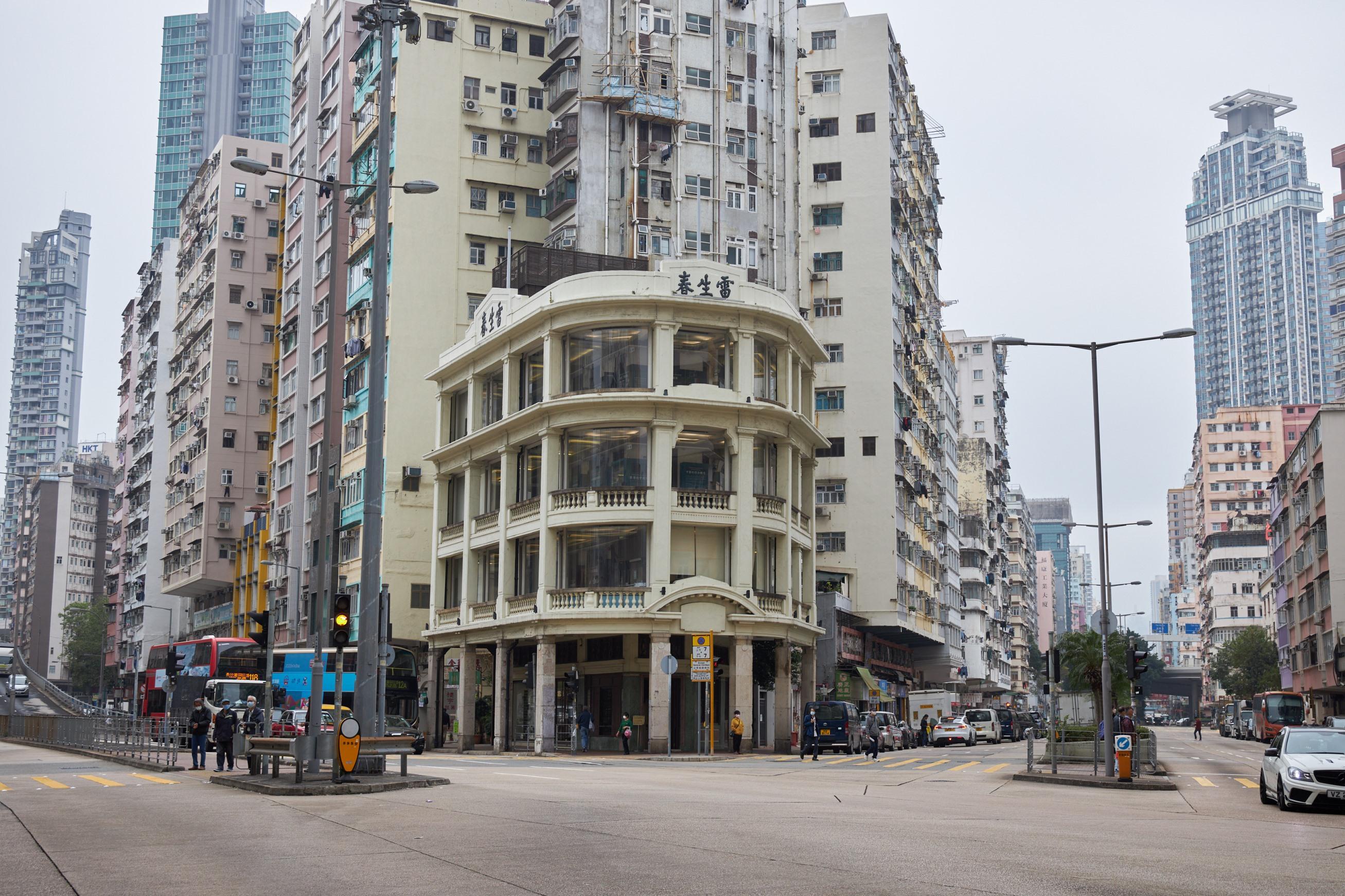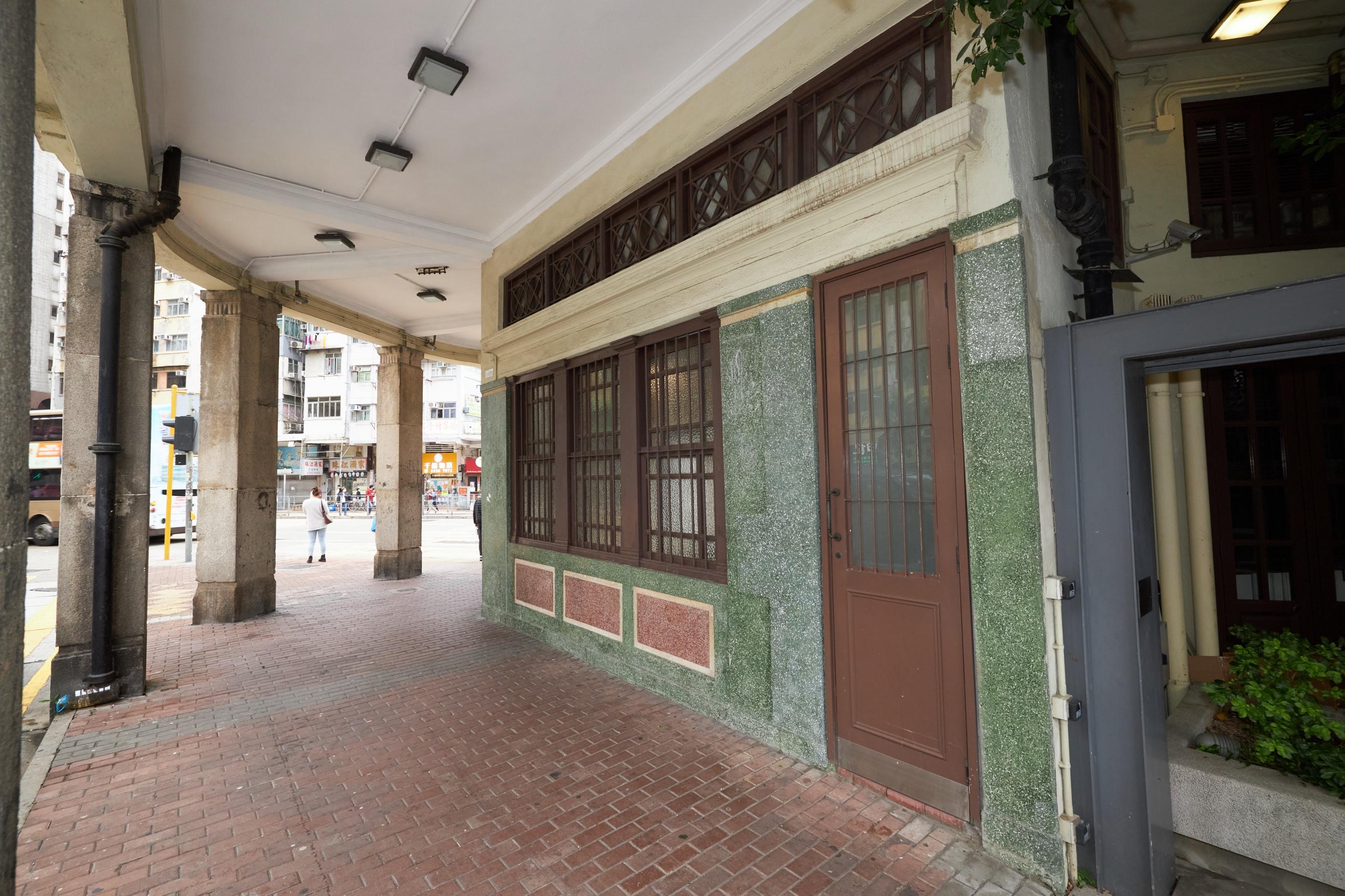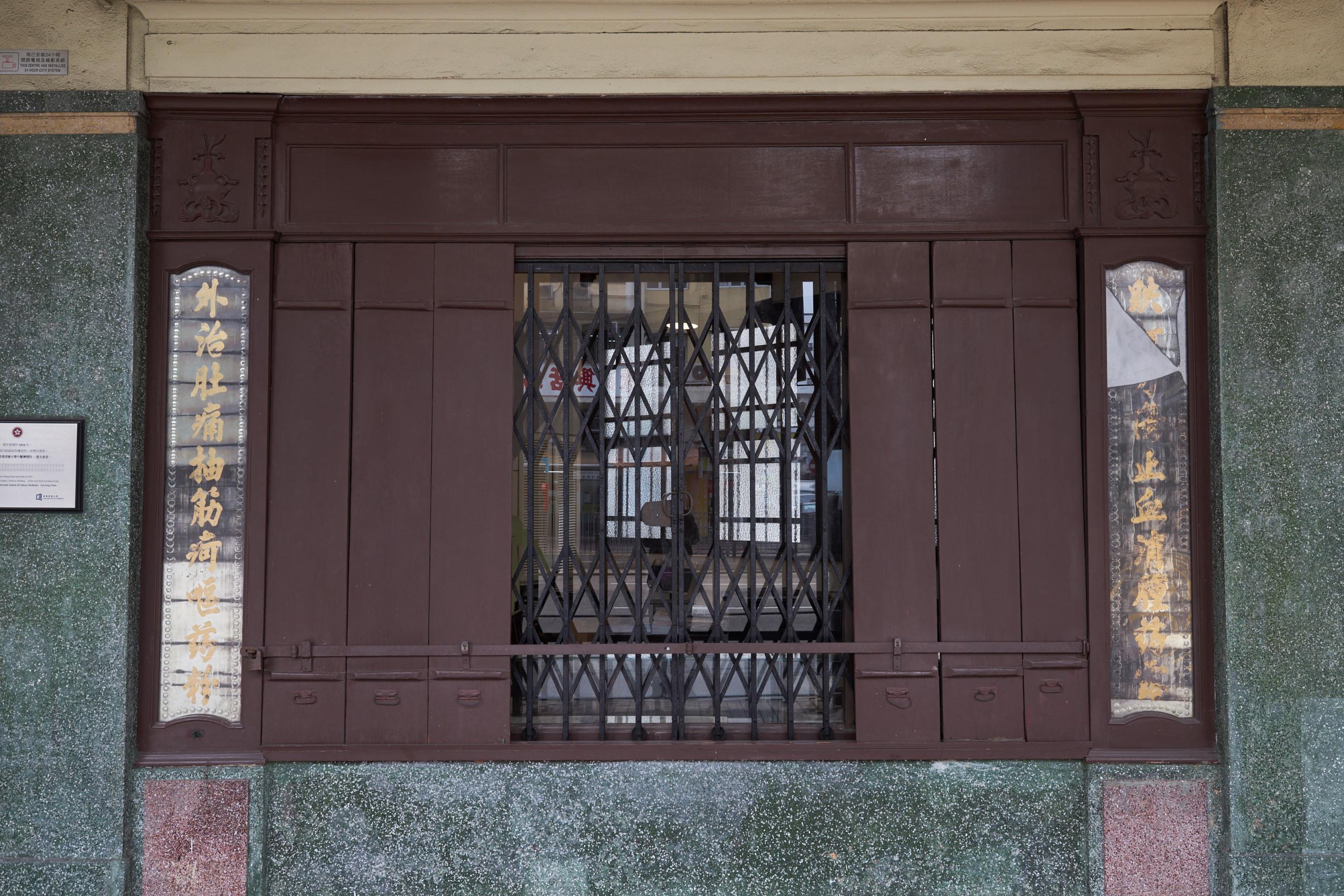Three historic buildings declared as monuments (with photos)
************************************************************
Located on Shelley Street, Jamia Mosque is the oldest mosque in Hong Kong. It was built between 1915 and 1916 with donations from Bombay merchant Haji Mohamed Essack Elias to replace the old mosque on the same site.
Jamia Mosque was constructed with concrete and bricks with an elongated rectangular plan built along an east-west axis, with its entrance at the east and the Qibla wall at the west facing the Holy Kaaba in Mecca, Saudi Arabia. Mecca is the birth place of the Holy Prophet Muhammad. Rich Islamic mosque architectural features can be seen at Jamia Mosque, such as the minaret crowned by a dome decorated with finial, the pointed multifoil archways at the entrance portico and doorways, the pointed arches above the coloured glazed windows, the octagonal dome at the centre of the prayer hall, the mihrab on the Qibla wall and the Kufic calligraphic motifs on the walls. Jamia Mosque is historically significant as it has witnessed the growth of the Muslim community in Hong Kong. It remains as an important place of worship and gathering for local Muslims.
Hong Kong City Hall, located at Edinburgh Place, is the second city hall in the city. It was officially opened on March 2, 1962, by the then Governor Sir Robert Black. The City Hall was the first multi-purpose cultural complex open to all citizens and has been a venue for various important ceremonies, including the inauguration ceremonies of five governors of Hong Kong and ceremonial openings of the new Legal Year. It is also a cradle for local performers and a testimony to the arts and cultural development in Hong Kong. Moreover, it testifies to the commitment of the Government to enrich the cultural lives and improve the living standards of citizens by creating a hub of cultural activities and municipal services.
The City Hall is an outstanding example of modernist architecture which adopts a modest design that focuses on fulfilling the functions of the building. It comprises the Low Block, the Memorial Garden and the High Block, which are well connected through a covered walkway. The Low Block houses a concert hall, a theatre and an exhibition gallery, while the High Block houses a marriage registry, a public library and a recital hall. The Memorial Garden and the 12-sided Memorial Shrine located at the centre of the garden are dedicated to the soldiers and citizens who sacrificed their lives defending Hong Kong in World War II. Located at the harbourfront, the design ensures all facilities, except the enclosed auditoria, have sea views and thus creates a sense of space. The City Hall is a rare and significant example of modernist architecture, which sets an architectural trend in Hong Kong and has become a landmark.
Lui Seng Chun is a four-storey tong lau (literally meaning Chinese-style building, the local term for Hong Kong shophouse typology) located on a triangular site in Mong Kok. It was built in 1931 and owned by Lui Leung, one of the founders of the Kowloon Motor Bus Company (1933) Limited. The Lui family ran a Chinese medicine shop on the ground floor and lived on the upper floors. The medicine shop was closed a few years after Mr Lui's passing in 1944. In 2003, the family donated the building to the Hong Kong Government for preservation. The donation was unprecedented in Hong Kong.
Lui Seng Chun was designed by W H Bourne. The building is of a neo-classical style mixed with art deco elements such as sweeping horizontal lines and robust classical details. Its main front elevation adopts a curved design.
Lui Seng Chun has been revitalised as a Chinese medicine and healthcare centre operated by Hong Kong Baptist University since 2012 under Batch I of the Revitalising Historic Buildings Through Partnership Scheme. Apart from resuming the original function of Lui Seng Chun as a medical-related facility, the original architectural form and elements such as granite columns, terrazzo exterior wall, flooring tiles, and staircase are well preserved. The building is a testimony to the history of a well-respected family, including the economic activities of their Chinese medicine shop around World War II.
Information on the three monuments is available on the website of Antiquities and Monuments Office (www.amo.gov.hk/en/historic-buildings/monuments/index.html).
Ends/Friday, May 20, 2022
Issued at HKT 11:00
Issued at HKT 11:00
NNNN





